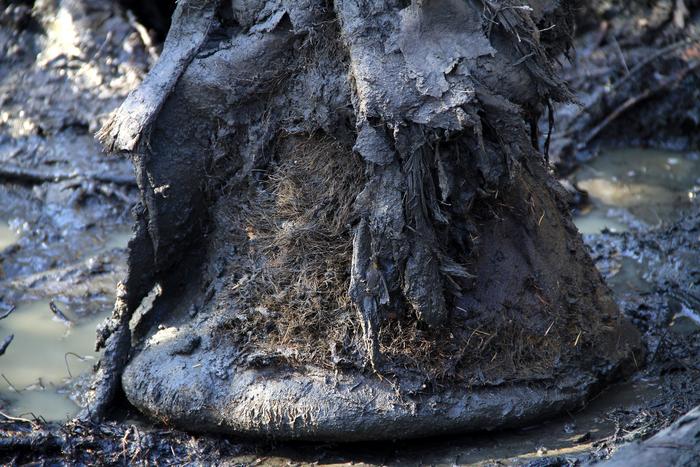Some of the world’s oldest microbial DNA has been found preserved in the mammoth remains dating back over one million years.
An international team, led by researchers at the Centre for Palaeogenetics in Sweden, analyzed microbial DNA from 483 mammoth samples, sequencing 440 for the first time.
The study also pinpointed a bacterium that plagued these colossal ice age creatures.
“Our results push the study of microbial DNA back beyond a million years, opening up new possibilities to explore how host-associated microbes evolved in parallel with their hosts,” said Benjamin Guinet, a postdoctoral fellow at the Centre for Palaeogenetics and lead author of the study.

Identification of microbes
The team used genomic and bioinformatic techniques to analyze the remains of woolly and steppe mammoths. The latter lived about 1.1 million years ago.
They first sequenced all the DNA in the samples, including a mix of mammoth DNA, ancient microbial DNA, and modern DNA from contaminating microbes after death.
“Imagine holding a million-year-old mammoth tooth. What if I told you it still carries traces of the ancient microbes that lived together with this mammoth?” Guinet said.
The analysis consistently found six microbes living with these giant creatures. Among them were relatives of bacteria like Actinobacillus, Pasteurella, Streptococcus, and Erysipelothrix.
Some of these ancient microbes show strong resemblances to modern pathogens. Notably, one of the Pasteurella-related bacteria found in the study is closely linked to deadly outbreaks among African elephants.
This finding raises the possibility that mammoths, as close relatives of modern elephants, might have been susceptible to similar infections.
More interestingly, the team managed to reconstruct partial genomes of a bacterium called Erysipelothrix from the remains of a 1.1-million-year-old steppe mammoth.
The study says it represents the “oldest known host-associated microbial DNA ever recovered.”
“As microbes evolve fast, obtaining reliable DNA data across more than a million years was like following a trail that kept rewriting itself,” said Tom van der Valk, senior author.
“Our findings show that ancient remains can preserve biological insights far beyond the host genome, offering us perspectives on how microbes influenced adaptation, disease, and extinction in Pleistocene ecosystems,” the author added.
Host-microbe evolution
It’s hard to know exactly how the identified microbes affected mammoth health because their DNA is degraded, and experts don’t have enough data to compare it to.
However, the findings offer a unique look into the microbiomes of extinct giant animals.
It indicates that some groups of microbes lived alongside mammoths for hundreds of thousands of years.
Their presence spanned wide geographic ranges and a long evolutionary period, from over one million years ago to the extinction of woolly mammoths on Wrangel Island around 4,000 years ago.
This research is expected to reveal more about the health, ecology, and evolutionary challenges some of Earth’s most impressive ancient creatures face.
“This work opens a new chapter in understanding the biology of extinct species. Not only can we study the genomes of mammoths themselves, but we can now begin to explore the microbial communities that lived inside them,” concluded Love Dalén, Professor of Evolutionary Genomics at the Centre for Palaeogenetics.
The findings were published in the journal Cell.